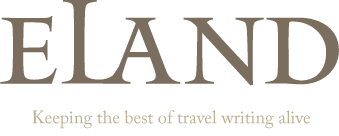Stamboul Sketches - John Freely
Stamboul Sketches - John Freely
Throughout the 1960s, John Freely explored the alleys, hidden corners and monuments of Istanbul, in between teaching, to create a legendary guidebook with Hilary Sumner-Boyd. But all the passages that were too personal, too capricious, too idiosyncratic, too indulgent of eccentric personalities, too wrapped up in the love of mid-afternoon banter, too indulgent of musicians, dancers, gypsies, dervishes, drunks, beggars, fishermen, poets, fortune- tellers, folk healers, mimics and prostitutes, were cut from their scholarly guide. Stamboul Sketches is fashioned from these off-cuts, a chronicle of chance encounters inspired by Evliya Çelebi, the Pepys of seventeenth-century Istanbul. It is a beautiful, quirky portrait of a city which, Freely says, ‘grabs you by the heart and never lets you go’.
‘Freely reveals a superb eye for the telling details.’ - The Independent
‘John Freely has made me laugh harder than any man I know.’ - Jason Goodwin
Stamboul Sketches: Encounters in Old Istanbul
With photographs by Sedat Pakay
ISBN: 978-1780600-56-7
Format: 208pp demi pb
Place: Istanbul
Extract from Chapter One
Evliya, the son of Dervish Mehmet, was born in Stamboul on the tenth of Muharrem in the year after the Hegira 1020 (AD1611) in the reign of Ahmet I. As Evliya writes in the Seyahatname, in the section entitled Anecdotes of the Youth of the Author, ‘At the time when my mother was lying in with me, the humble Evliya, no fewer than seventy holy men were assembled at our house. At my birth the sheikh of the Mevlevi dervishes took me into his arms, threw me into the air, and catching me again, said, “May this boy be exalted in life!”’ After relating other anecdotes concerning these scholars and divines and the comments they made at the time of his birth, Evliya concludes with this characteristic statement: ‘The short subject of this long discussion is to show that I, the humble Evliya, was favoured with the particular attention of these saints and holy men.’
Evliya came from an old and distinguished Turkish family which traced its lineage back to Sheikh Ahmet Yesov, who was the teacher of Hadji Bekta, the founder of the Bektaşi order of dervishes. Evliya’s father had been Standard-Bearer in the army of Süleyman the Magnificent, and was at the Sultan’s side when he died at the siege of Sziget in 1566. During the reign of Ahmet I, Dervish Mehmet became Chief of the Goldsmiths, a trade to which Evliya was apprenticed when he was a young man. His uncle and patron, Melek Ahmet Paşa, was a Grand Vezir in the reign of Murat IV (1623–40) and Evliya accompanied him on many of his missions and campaigns. His grandfather, Yavuz Ersinan, was Standard-Bearer in the army of Sultan Mehmet II and was present when Constantinople fell to the Turks in 1453. (Those two generations of Evliya’s family span at least two centuries; either his forebears were incredibly long-lived or the intervening ancestors were foreshortened in the telescope of Evliya’s imagination.)
After the Conquest, Yavuz Ersinan was allotted a plot of land in Unkapanı (the Flour Store), the district around the Stamboul shore of the present-day Atatürk Bridge. The mosque which he founded at that time, about 1455, is still standing and in use; it is probably the oldest surviving mosque in the city. It is called Sağrıcılar Camii, the Mosque of the Leather-Workers, after the artisans who have practised their trade in that neighbourhood for centuries. When Yavuz Ersinan died he was buried in the garden behind his mosque, and his moss-covered tombstone can still be seen there today. But the family homestead in which Evliya was born has vanished without a trace.
When he was six years old Evliya was enrolled in the school of Hamid Efendi in the section called Fil Yokuşu, the Path of the Elephant. (The street from which this section takes its name is still in existence, winding up from the shore of the Golden Horn to the heights above Unkapanı.) Evliya studied in Hamid Efendi’s school for seven years, during which his tutor was Evliya Mehmet Efendi, Chief Imam in the court of Sultan Murat IV. While there he studied calligraphy, music, grammar and the Koran, in the reading and singing of which he particularly excelled. After leaving Hamid Efendi’s school Evliya continued his studies with Evliya Mehmet Efendi, who appears to have given him a remarkably broad education. As Evliya once remarked to Murat IV: ‘I am versed in seventy-two sciences; does your majesty wish to hear something of Persian, Arabic, Syriac, Greek or Turkish? Something of the different tunes of music, or poetry in various measures?’ To which the Sultan replied: ‘What a boasting fellow this is! Is he a Revani (a prattler), and is this all nonsense, or is he capable of performing all that he says?’ We have only Evliya’s own testimony to prove that he was no idle boaster, but an imaginative elaborator of the truth.
When Evliya was about twenty years old, so he tells us, he began making excursions in the vicinity of Istanbul and thereby decided to become a traveller. ‘It was in the time of the illustrious reign of Murat IV that I began to think of extensive travels, in order to escape from the power of my father, mother and brethren. Forming a design of travelling over the whole earth, I entreated God to give me health for my body and faith for my soul. I sought the conversations of dervishes, and when I heard a description of the seven climates and of the four quarters of the earth.


